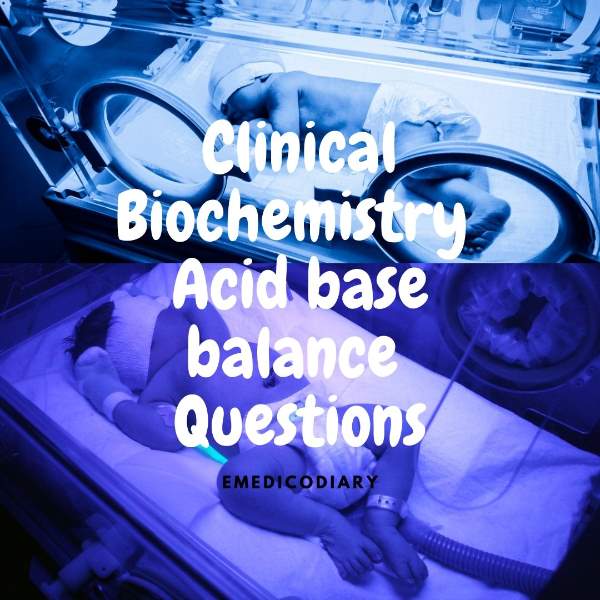MBBS 1st Year Question Collection Of Clinical Biochemistry and Acid base balance & Disorder
Clinical Biochemistry
- Define quality control. Components of quality control and common laboratory hazards. How can you maintain quality control in the laboratory?
- What do you mean by precision, accuracy, sensitivity, and specificity?
- What are the modern techniques in biochemistry?
- Mention the principle and function of any two modern techniques.
- Enumerate the functions tests.
- Give an account of renal function tests.
- State the enzymatic tests related to myocardial infarction.
- Mention the common hazards and associated safety measures in the clinical laboratory.
- Differentiate the type of jaundice.
- Interpret the results of secondary hyperparathyroidism and subclinical hypothyroidism.
- SN: i) lipids profile ii) lab hazard.
- What is the principle of photometrics?
- Mention the essential part and operations procedure of photometry.
- Define diabetes mellitus. How to diagnose a case of DM.
- How serums creatinine bis better markers than serums urea.
- Explain the importance of OGTT. How will you prepare a patient for OGTT?
- Primary defects, biochemical findings, and compensated of SABD.
- Thyroid function tests.
- What is proteinuria
- Normal and abnormal constitute urine
- Diagnostic criteria DM.
- How bilirubin is synthesized
Acid-base Balance and Disorders
- Mention the acid-base disorders.
- Cause and components of respiratory/ metabolic acidosis. How they are compensated.
- How the body maintained acid-base balance.
- Causes of metabolic acidosis and alkalosis.
- Difference between metabolic and respiratory alkalosis/acidosis
- Base deficit.
- Mention the biochemical change in metabolic acidosis and respiratory Alkalosis with compensation.
- Explain acid-base disorders from following date pH=7.25, HCO3=16q/1, PCO2=30mmHg
- Why tetany occurs in alkalosis.
- A 65, year-old man with diabetes is admitted with lethargy. Laboratory test results in pH=7.24. Evaluate the acid-base status of the patient.
- Write the normal acid-base composition of venous blood, and mention the pH, primary event, and mechanism of the composition of simple acid-base disorders.
- Name the acid and base produced in the body.
- What are the parameters measured during acid-base disorders? Mention their normal values in venous blood.
- Define and classify acidosis.
- Explain acid-base disorders from the following data [pH-2.5[Hco3]-16 meq/l, pco2-39 mm of Hg]
Also read: Biochemistry Questions & Answers
Also read: Question Collection

Comments (0)